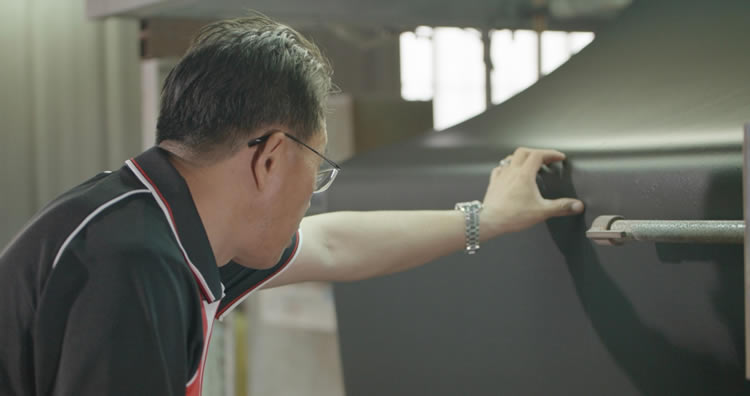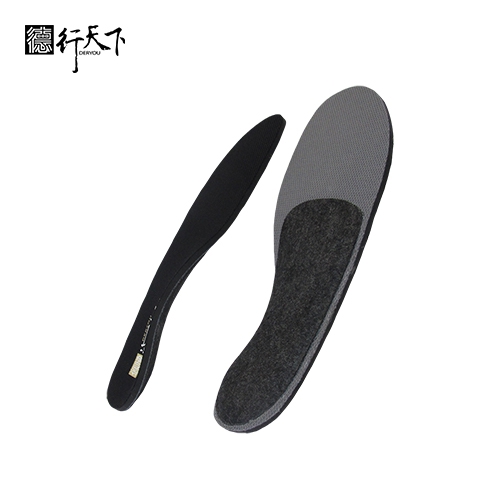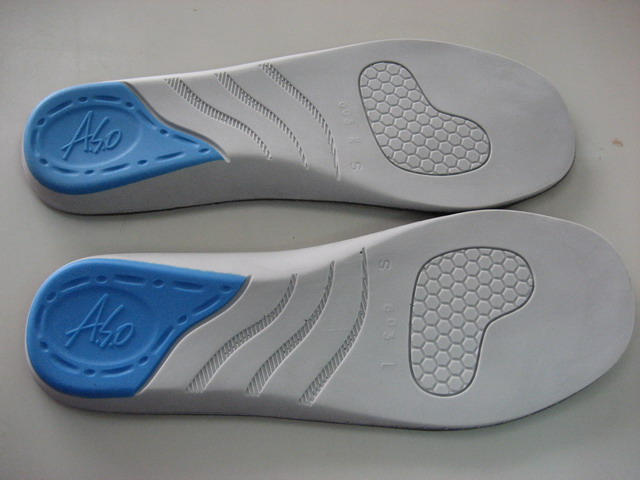Introduction – Company Background
GuangXin Industrial Co., Ltd. is a specialized manufacturer dedicated to the development and production of high-quality insoles.
With a strong foundation in material science and footwear ergonomics, we serve as a trusted partner for global brands seeking reliable insole solutions that combine comfort, functionality, and design.
With years of experience in insole production and OEM/ODM services, GuangXin has successfully supported a wide range of clients across various industries—including sportswear, health & wellness, orthopedic care, and daily footwear.
From initial prototyping to mass production, we provide comprehensive support tailored to each client’s market and application needs.
At GuangXin, we are committed to quality, innovation, and sustainable development. Every insole we produce reflects our dedication to precision craftsmanship, forward-thinking design, and ESG-driven practices.
By integrating eco-friendly materials, clean production processes, and responsible sourcing, we help our partners meet both market demand and environmental goals.


Core Strengths in Insole Manufacturing
At GuangXin Industrial, our core strength lies in our deep expertise and versatility in insole and pillow manufacturing. We specialize in working with a wide range of materials, including PU (polyurethane), natural latex, and advanced graphene composites, to develop insoles and pillows that meet diverse performance, comfort, and health-support needs.
Whether it's cushioning, support, breathability, or antibacterial function, we tailor material selection to the exact requirements of each project-whether for foot wellness or ergonomic sleep products.
We provide end-to-end manufacturing capabilities under one roof—covering every stage from material sourcing and foaming, to precision molding, lamination, cutting, sewing, and strict quality control. This full-process control not only ensures product consistency and durability, but also allows for faster lead times and better customization flexibility.
With our flexible production capacity, we accommodate both small batch custom orders and high-volume mass production with equal efficiency. Whether you're a startup launching your first insole or pillow line, or a global brand scaling up to meet market demand, GuangXin is equipped to deliver reliable OEM/ODM solutions that grow with your business.



Customization & OEM/ODM Flexibility
GuangXin offers exceptional flexibility in customization and OEM/ODM services, empowering our partners to create insole products that truly align with their brand identity and target market. We develop insoles tailored to specific foot shapes, end-user needs, and regional market preferences, ensuring optimal fit and functionality.
Our team supports comprehensive branding solutions, including logo printing, custom packaging, and product integration support for marketing campaigns. Whether you're launching a new product line or upgrading an existing one, we help your vision come to life with attention to detail and consistent brand presentation.
With fast prototyping services and efficient lead times, GuangXin helps reduce your time-to-market and respond quickly to evolving trends or seasonal demands. From concept to final production, we offer agile support that keeps you ahead of the competition.
Quality Assurance & Certifications
Quality is at the heart of everything we do. GuangXin implements a rigorous quality control system at every stage of production—ensuring that each insole meets the highest standards of consistency, comfort, and durability.
We provide a variety of in-house and third-party testing options, including antibacterial performance, odor control, durability testing, and eco-safety verification, to meet the specific needs of our clients and markets.
Our products are fully compliant with international safety and environmental standards, such as REACH, RoHS, and other applicable export regulations. This ensures seamless entry into global markets while supporting your ESG and product safety commitments.
ESG-Oriented Sustainable Production
At GuangXin Industrial, we are committed to integrating ESG (Environmental, Social, and Governance) values into every step of our manufacturing process. We actively pursue eco-conscious practices by utilizing eco-friendly materials and adopting low-carbon production methods to reduce environmental impact.
To support circular economy goals, we offer recycled and upcycled material options, including innovative applications such as recycled glass and repurposed LCD panel glass. These materials are processed using advanced techniques to retain performance while reducing waste—contributing to a more sustainable supply chain.
We also work closely with our partners to support their ESG compliance and sustainability reporting needs, providing documentation, traceability, and material data upon request. Whether you're aiming to meet corporate sustainability targets or align with global green regulations, GuangXin is your trusted manufacturing ally in building a better, greener future.
Let’s Build Your Next Insole Success Together
Looking for a reliable insole manufacturing partner that understands customization, quality, and flexibility? GuangXin Industrial Co., Ltd. specializes in high-performance insole production, offering tailored solutions for brands across the globe. Whether you're launching a new insole collection or expanding your existing product line, we provide OEM/ODM services built around your unique design and performance goals.
From small-batch custom orders to full-scale mass production, our flexible insole manufacturing capabilities adapt to your business needs. With expertise in PU, latex, and graphene insole materials, we turn ideas into functional, comfortable, and market-ready insoles that deliver value.
Contact us today to discuss your next insole project. Let GuangXin help you create custom insoles that stand out, perform better, and reflect your brand’s commitment to comfort, quality, and sustainability.
🔗 Learn more or get in touch:
🌐 Website: https://www.deryou-tw.com/
📧 Email: shela.a9119@msa.hinet.net
📘 Facebook: facebook.com/deryou.tw
📷 Instagram: instagram.com/deryou.tw
Taiwan athletic insole OEM supplier
Are you looking for a trusted and experienced manufacturing partner that can bring your comfort-focused product ideas to life? GuangXin Industrial Co., Ltd. is your ideal OEM/ODM supplier, specializing in insole production, pillow manufacturing, and advanced graphene product design.
With decades of experience in insole OEM/ODM, we provide full-service manufacturing—from PU and latex to cutting-edge graphene-infused insoles—customized to meet your performance, support, and breathability requirements. Our production process is vertically integrated, covering everything from material sourcing and foaming to molding, cutting, and strict quality control.Taiwan pillow ODM development factory
Beyond insoles, GuangXin also offers pillow OEM/ODM services with a focus on ergonomic comfort and functional innovation. Whether you need memory foam, latex, or smart material integration for neck and sleep support, we deliver tailor-made solutions that reflect your brand’s values.
We are especially proud to lead the way in ESG-driven insole development. Through the use of recycled materials—such as repurposed LCD glass—and low-carbon production processes, we help our partners meet sustainability goals without compromising product quality. Our ESG insole solutions are designed not only for comfort but also for compliance with global environmental standards.Taiwan ODM expert factory for comfort product development
At GuangXin, we don’t just manufacture products—we create long-term value for your brand. Whether you're developing your first product line or scaling up globally, our flexible production capabilities and collaborative approach will help you go further, faster.China custom insole OEM supplier
📩 Contact us today to learn how our insole OEM, pillow ODM, and graphene product design services can elevate your product offering—while aligning with the sustainability expectations of modern consumers.Pillow OEM for wellness brands China
Human noise pollution interferes with baby oysters’ natural acoustic cues, hindering their settlement. While acoustic technology can aid oyster recruitment in quieter areas, it is less effective in noisy environments. Researchers are optimistic about its use in less trafficked areas. Credit: Dominic McAfee Research from the University of Adelaide reveals that human-generated noise is hindering baby oysters’ ability to use natural sounds to find habitats, affecting marine conservation efforts. Although acoustic technology helps in quieter areas, its effectiveness is reduced in noisy urban settings. New research from the University of Adelaide indicates that baby oysters, which depend on natural acoustic cues to find suitable environments for settling, are being disrupted by noise pollution from human activities. “The ocean’s natural sound is gradually hushing due to habitat loss, leading to a quieter natural environment increasingly drowned out by the crescendo of man-made noise pollution,” explained lead author Dr Brittany Williams, from the University’s Southern Seas Ecology Laboratories. “Numerous marine larvae rely on natural sounds to navigate and select their dwellings, so this interference poses a problem for conservationists aiming to attract oysters to restored reefs using natural sounds. “Noises from shipping, machinery, and construction, for example, are pervasive and pose serious environmental change that affects both terrestrial and marine animals.” According to the research, published in Proceedings of the Royal Society B, marine organisms appear particularly vulnerable to the intensification of anthropogenic noise because they use sound for a range of activities, including to sense their surroundings, navigate, communicate, avoid predators, and find mates and food. Challenges and Limitations of Acoustic Technology “Our previous work demonstrated that novel acoustic technology can bolster oyster recruitment in habitat restoration projects, but this new research indicates potential limitations of this speaker technology,” said the University of Adelaide’s Dr Dominic McAfee, who was part of the research team. In environments where there is a lot of human noise pollution, the speakers did not increase larval recruitment. “This suggests that noise pollution might cloak the intrinsic sounds of the ocean, potentially exerting profound ramifications on marine ecosystem vitality and resilience,” said co-author Professor Sean Connell, from the University of Adelaide and the Environment Institute. While acoustic enrichment may be less effective along noisy metropolitan coastlines and urbanized waterways, the researchers are still optimistic about the application of the technique in less trafficked areas. “Where there is little anthropogenic noise, acoustic enrichment appears to enhance the process of recruitment which is key to restoration success,” said Dr Williams. Reference: “Anthropogenic noise disrupts acoustic cues for recruitment” by Brittany R. Williams, Dominic McAfee and Sean D. Connell, 1 July 2024, Proceedings B. DOI: 10.1098/rspb.2024.0741
Researchers developed a 3D atlas of the developing mouse brain, offering insights into brain growth and disorders. The atlas, available online, was created using advanced imaging techniques across seven developmental stages. New high-resolution maps of the mouse brain provide researchers with valuable insights into brain development and offer a powerful tool for studying neurodevelopmental disorders. Researchers at Penn State College of Medicine, in collaboration with five other institutes, have developed a 3D atlas of developing mouse brains using advanced imaging and microscopy techniques. This innovative atlas offers a comprehensive, 360-degree view of the entire mammalian brain during embryonic and early postnatal stages. It serves as a valuable reference and anatomical framework, aiding researchers in studying brain development and neurodevelopmental disorders. They recently published their work in Nature Communications. “Maps are a fundamental infrastructure to build knowledge upon but we don’t have a high-resolution 3D atlas of the developing brain,” said Yongsoo Kim, associate professor of neural and behavioral sciences at Penn State College of Medicine and senior author on the paper. “We are generating high-resolution maps that we can use to understand how the brain grows under normal circumstances and what happens when a brain disorder emerges.” The Importance of Brain Atlases Geographical atlases are a collection of maps that provide a comprehensive view of the Earth’s geography including boundaries between regions and countries, features like mountains and rivers, and thoroughfares like roads and highways. Importantly, they provide a common understanding that allows users to pinpoint specific locations and understand the spatial relationship between regions. Similarly, brain atlases are foundational for understanding the architecture of the brain. They help researchers visualize how the brain is organized spatially and understand brain structure, function, and how different regions and neurons are connected. Previously, scientists have been limited to 2D histology-based snapshots, which makes it challenging to interpret anatomical regions in three dimensions and any changes that may occur, Kim said. Researchers developed a 3D atlas of the developing mouse brain, with such images as this. Credit: Provided by the Kim Lab / Penn State In recent years, there has been tremendous progress in whole brain imaging techniques that let researchers look at the whole brain at high resolution and produce large-scale 3D datasets. To analyze this data, Kim explained, scientists have developed 3D reference atlases of the adult mouse brain, which is a model for the mammalian brain. The atlases provide a universal anatomical framework that allows researchers to overlay diverse datasets and conduct comparative analyses. However, there’s no equivalent for the developing mouse brain, which undergoes rapid changes in shape and volume during the embryonic and post-natal stages. “Without this 3D map of the developing brain, we cannot integrate data from emerging 3D studies into a standard spatial framework or analyze the data in a consistent manner,” Kim said. In other words, the lack of a 3D map hinders the advancement of neuroscience research. The research team created a multimodal 3D common coordinate framework of the mouse brain across seven developmental timepoints — four points of time during the embryonic period and three periods during the immediate postnatal phase. Using MRI, they captured images of the brain’s overall form and structure. They then employed light sheet fluorescence microscopy, an imaging technique that enables visualization of the whole brain at a single-cell resolution. These high-resolution images were then matched to the shape of the MRI templates of the brain to create the 3D map. The team pooled samples from both male and female mice. Creation of the 3D Brain Atlas To demonstrate how the atlas can be used to analyze different datasets and track how individual cell types emerge in the developing brain, the team focused on GABAergic neurons, which are nerve cells that play a key communication role in the brain. This cell type has been implicated in schizophrenia, autism and other neurological disorders. While scientists have studied GABAergic neurons in the outermost region of the brain called the cortex, not much is known about how these cells arise in the whole brain during development, according to the researchers. Understanding how these clusters of cells develop under normal conditions may be key to assessing what happens when something goes awry. To facilitate collaboration and further advancement in neuroscience research, the team created an interactive web-based version that is publicly available and free. The aim is to significantly lower technical barriers for researchers around the world to access this resource. “This provides a roadmap that can integrate a lot of different data — genomic, neuroimaging, microscopy, and more — into the same data infrastructure. It will drive the next evolution of brain research driven by machine learning and artificial intelligence,” Kim said. Reference: “Developmental mouse brain common coordinate framework” by Fae N. Kronman, Josephine K. Liwang, Rebecca Betty, Daniel J. Vanselow, Yuan-Ting Wu, Nicholas J. Tustison, Ashwin Bhandiwad, Steffy B. Manjila, Jennifer A. Minteer, Donghui Shin, Choong Heon Lee, Rohan Patil, Jeffrey T. Duda, Jian Xue, Yingxi Lin, Keith C. Cheng, Luis Puelles, James C. Gee, Jiangyang Zhang, Lydia Ng and Yongsoo Kim, 21 October 2024, Nature Communications. DOI: 10.1038/s41467-024-53254-w Other Penn State College of Medicine authors on the paper include: Fae Kronman, joint degree student in the MD/PhD Medical Scientist Training Program; Josephine Liwang, doctoral student; Rebecca Betty, research technologist; Daniel Vanselow, research project manager; Steffy Manjila, postdoctoral scholar; Jennifer Minteer, research technologist; Donghui Shin, research technologist; Rohan Patil, student; and Keith Cheng, distinguished professor, department of pathology. Nicholas Tustison at the University of Virginia School of Medicine; Ashwin Bhandiwad and Lydia Ng at the Allen Institute for Brain Science; Choong Heon Lee and Jiangyang Zhang at the NYU Grossman School of Medicine; Jeffrey Duda and James Gee at the University of Pennsylvania; Jian Xue and Yingxi Lin at the University of Texas Southwestern Medical Center; Luis Puelles at the Universidad de Murcia; and Yuan-Ting Wu, who was previously research scientist at Penn State and currently project scientist at Cedars-Sinai Medical Center, also contributed to the paper. The National Institutes of Health’s grants RF1MH12460501 from the Brain Research through Advancing Innovative Neurotechnologies (BRAIN) Initiative, R01NS108407, R01MH116176 and R01EB031722 supported this work.
The study found that even low doses of alcohol prepared the brain for addiction. How Many Drinks Is Too Much? According to a recent rodent study, even tiny amounts of alcohol may cause epigenomic and transcriptomic changes in brain circuitry in a region that is essential for the development of addiction. The pathways that are involved in setting the brain up for addiction, according to researchers at the University of Illinois at Chicago, are also linked to the highs that come with drinking, such as euphoria and anxiolysis, a state of relaxed but awake sedation. Subhash Pandey, director of the UIC Center for Research in Alcohol Epigenetics. Credit: Joshua Clark/University of Illinois Chicago “This suggests that when the brain experiences the anti-anxiety effects of alcohol and the mood lift — the relaxation and the buzz — it is also being primed for alcohol use disorder,” said the study’s senior author Subhash Pandey, the Joseph A. Flaherty endowed professor of psychiatry and director of the Center for Alcohol Research in Epigenetics in the UIC College of Medicine. Pandey states that while the research does not, for instance, imply that one drink results in addiction in individuals, it does provide some insights into why certain people are more susceptible to alcohol use disorder. “We’re seeing that dependent behaviors may not always be from long-term, high-quantity habits but a result of rapid epigenetic changes in the brain, which we show in this study may start happening even at low doses,” said Pandey, who is also a senior research career scientist at the Jesse Brown Veterans Affairs Medical Center. A paper published in the journal Molecular Psychiatry details Pandey’s experiments, which studied rats under control and alcohol exposure conditions. In the experiments, rodents were exposed to low concentrations of alcohol, and researchers watched as they navigated a maze. After that, the researchers used RNA sequencing to examine brain tissue samples they had obtained after euthanasia and searched for patterns in gene expression. Gene Expression and Anxiety Regulation When the samples were analyzed, the researchers discovered that a gene known as hypoxia-inducible factor 3 alpha subunit, or Hif3a for short, was connected to behaviors such as how long rats remained in parts of the maze with enclosed (high anxiety) or open arms (low anxiety). Alcohol increased Hif3a expression, even after low doses of exposure, and reduced anxiety. And, while many effects of alcohol are different among males and females, there was no difference between the two in this study. “We saw that low doses, what we consider ‘social drinking,’ changes the gene expression in the amygdala, a brain region that regulates anxiety. In other words, it creates an epigenetic pathway for addiction,” Pandey said. Blocking Hif3a Shows Impact on Anxiety and Alcohol Effects Pandey and his colleagues also set up additional experiments in which they blocked the gene in the amygdala of rats with or without alcohol exposure to validate its role in mediating anxiety. When Hif3a was blocked, anxiety was increased in control rats, mimicking withdrawal from chronic alcohol exposure. On the other hand, this also prevented the anti-anxiety effects of alcohol. The researchers showed why, too. Hif3a’s chromatin — bundles of DNA and RNA — are loosely bundled, meaning the genes are easily accessible for transcription changes. One thing the study does not suggest, however, is what level of alcohol exposure was safe for rodents. Instead, Pandey said, it’s important to know that low doses created priming for addiction. For people, he thinks the takeaway is simple — don’t assume social drinking or even “pandemic drinking” is without risk. “Alcohol use disorder is complex and challenging to overcome. The information we learned from this study helps us to understand better what is happening in the brain and, one day, may be leveraged to develop better treatments and pharmaceuticals,” Pandey said. Reference: “Unraveling the epigenomic and transcriptomic interplay during alcohol-induced anxiolysis” by Harish R. Krishnan, Huaibo Zhang, Ying Chen, John Peyton Bohnsack, Annie W. Shieh, Handojo Kusumo, Jenny Drnevich, Chunyu Liu, Dennis R. Grayson, Mark Maienschein-Cline and Subhash C. Pandey, 12 September 2022, Molecular Psychiatry. DOI: 10.1038/s41380-022-01732-2 The study was funded by the National Institute on Alcohol Abuse and Alcoholism and the U.S. Department of Veterans Affairs.
DVDV1551RTWW78V
Arch support insole OEM from China 》manufacturing with a focus on sustainability and comfortChina OEM factory for footwear and bedding 》seamless coordination from idea to finished productHigh-performance graphene insole OEM Vietnam 》trusted by global brands for reliable quality and flexibility
下一則: Taiwan insole OEM manufacturing factory 》committed
限會員,要發表迴響,請先登入


